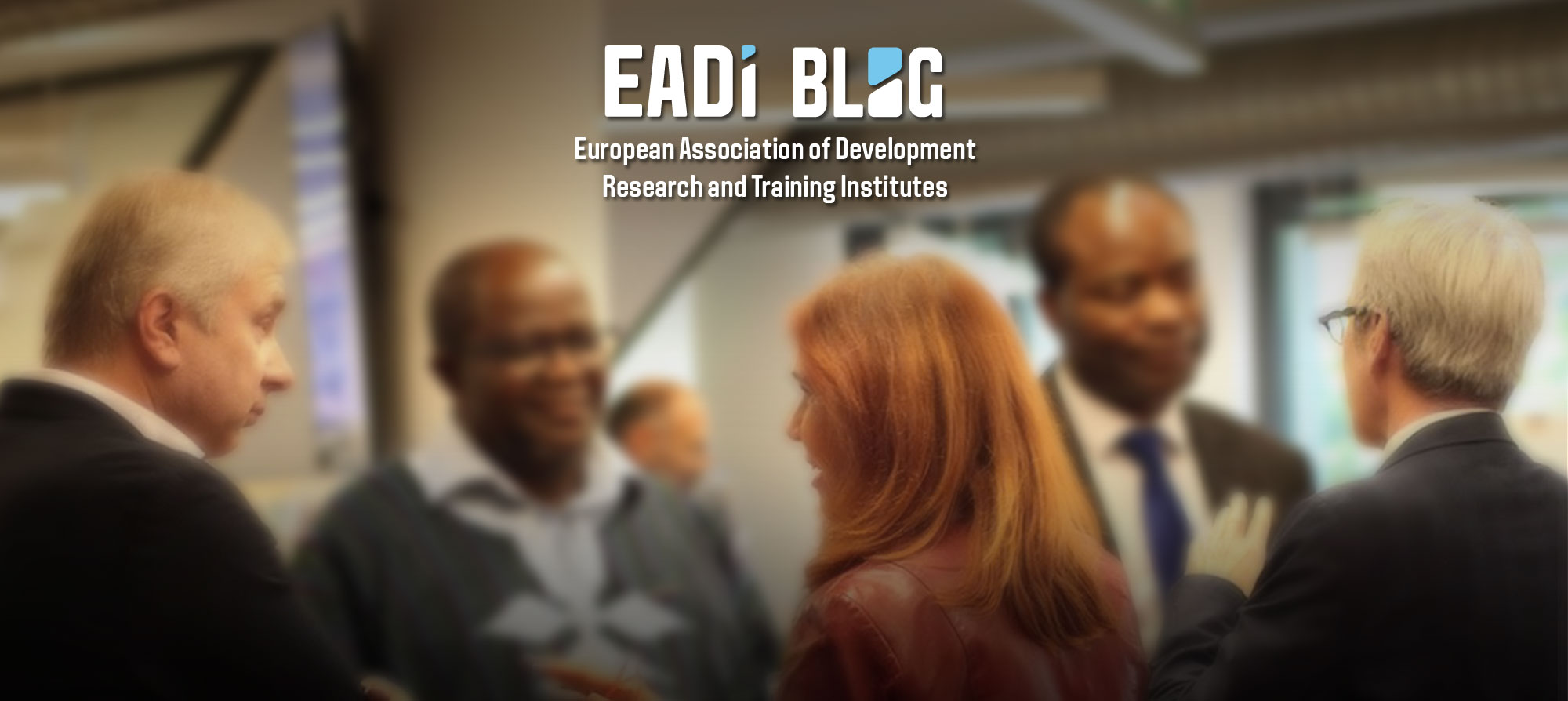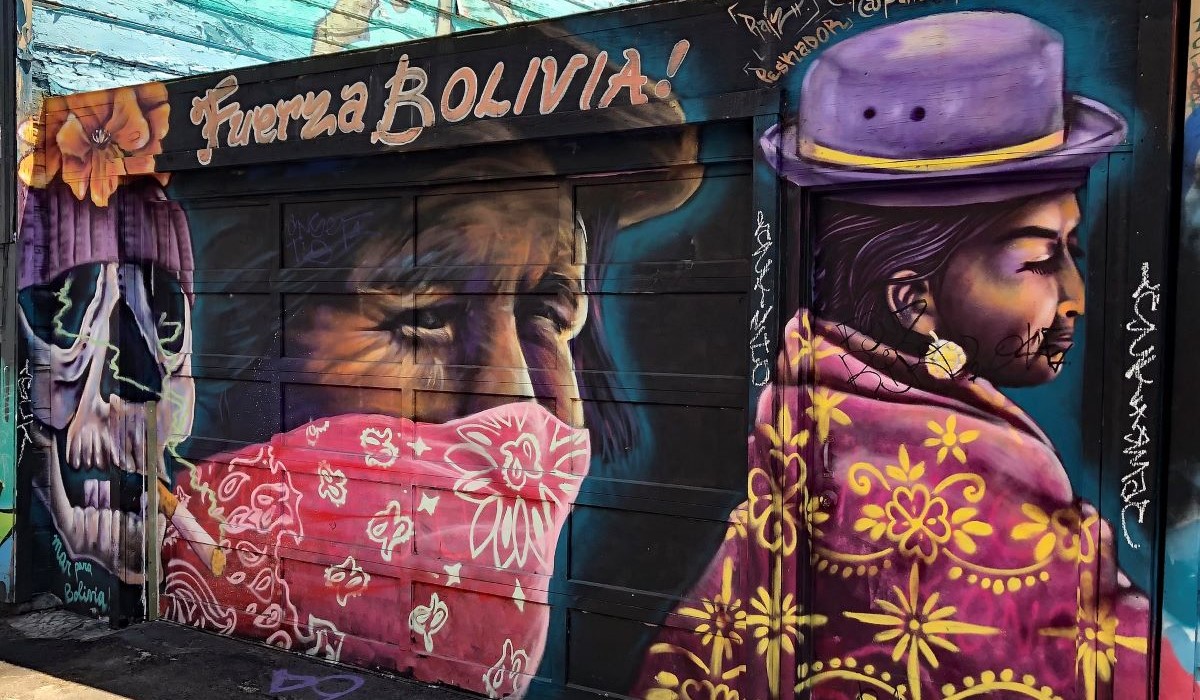By María Fernanda Córdova Suxo
The Indigenous subject has been positioned as a key player in alternatives to development. These alternatives refer to Indigenous People’s struggles and knowledge as distinct ways of facing current crises – including environmental, food, and capitalist crises. This positioning can be interpreted as a result of different indigenous movements working together across borders, in search of self-determination and the fulfillment of their human rights. However, this indigenous subject, within academia and other spheres from which power emerges, tends to be framed in abstract characteristics and is dissociated from the complexity of its context. Therefore, the evocation of indigeneities does not necessarily correspond to the stance that these groups currently demonstrate.
Indigenous identity has evolved beyond discourses solely focusing on land rights and nativeness. Today, indigenous peoples are increasingly visible in diasporic networks, where their identity isn’t always tied to a specific locality but rather to the necessity of transnational solidarity as a means to counter internal oppressive regimes. Take, for instance, the case of Tibetan indigeneity, integrated as a strategy for self-determination against Chinese oppression. Similarly, there are indigenous communities navigating modernity, weaving cultural elements into urban expansion, as described by Guido Alejo. This shift highlights the multifaceted nature of indigenous struggles and their adaptation to contemporary global dynamics.
Regarding the latest development in the encounter between indigeneity and modernity, an upcoming publication titled “Post Development from the Global South: Radical Alternatives or Ambivalent Engagements?” will have a chapter dedicated to exploring this intriguing dynamic, by revisiting frequently cited theoretical frameworks, in the specific setting of the Bolivian Andes. As a teaser for this forthcoming contribution, I offer a glimpse into some key characteristics of these approaches, encouraging readers to join the conversation about the limitations and possibilities they present.
Exploring the Interplay of Indigeneity and Modernity
In numerous contemporary settings, we observe old traditions mixing with modern ideas of progress. Scholars in cultural studies often label this dynamic as a hybrid manifestation, acknowledging the diverse ways in which indigenous populations blend with modernity. At the core of this interaction lies coloniality, wherein the legacy of colonial rule determines the boundaries between what is deemed modern and what is considered traditional. The effects of colonial rule go beyond a categorization system, shaping not only the characteristics of these traditions but also influencing how individuals perceive and adopt modernity.
Modern ideals often represent progress and advancement. Yet, there’s a thought-provoking debate about whether there’s just one version of modernity. Thinkers like Dipesh Chakrabarty propose the idea of multiple modernities, suggesting that indigenous traditions can coexist alongside modernization, challenging the notion of progress as a one-size-fits-all concept. However, when we look at the economic aspects of these multiple configurations, it is observed that the workforce sustaining these developments disproportionately affects people who are already vulnerable. Amidst the intricacies of these debates, one fundamental truth remains: a system of exploitation endures, perpetuating entrenched marginalization.
While the blending of indigenous traditional practices and modernity offers a rich and diverse cultural landscape, it’s important to recognize and address the ongoing challenges of exploitation and marginalization that persist within these dynamics, particularly for vulnerable populations. This review becomes even more significant as it revisits the initial premise of this post: the evolution of indigeneity has taken diverse paths, urging us to reconsider the explanatory power of both concepts and the intricate effects of modernity on indigenous organizations.
Discourse and Economic Dynamics
In Bolivia for example, the concept of indigeneity has become closely linked with the narrative surrounding Evo Morales, often regarded as the first indigenous president, and the political project of the Movimiento al Socialismo – Instrumento Político por la Soberanía de los Pueblos (MAS-IPSP), which emerged from a hegemonic movement of indigenous, native, and rural populations. Additionally, the notion of “Vivir Bien” (Living Well) has been established as both a horizon and an anti-capitalist paradigm for development. However, over time, there has been a dilution of this discourse, including its original anti-capitalist stance.
Moreover, economic practices blending traditional and modern elements can be observed throughout the population’s daily life, from architecture and festivities to social organization, successfully establishing market networks and trade processes. While there has been an increase in the middle class and an expansion of basic services, this growth has taken place within the realm of the informal sector of the economy, such as illicit trade and tax evasion. Furthermore, the economy sustaining the country’s basic service coverage has heavily relied on royalties from hydrocarbon exploitation, now nearly depleted.
These seemingly contradictory characteristics suggest hybrid manifestations, involving a blending of traditional indigenous elements with modern political and economic structures. While indigenous traditions and identities are still present, they have evolved within the context of modern political movements and economic practices. This prompts us to question whether the hybridity of these cultures is exclusive to the Bolivian context, or to those contexts with a colonial past – Are not other expressions of apparent opposites, with a different historical background, also hybrid? The experience of Bolivian organizations suggests that embracing modern ways represents the result of people’s efforts to meet basic needs and join a job market that supports their culture and connects them globally. Achieving citizenship in once marginalized areas also means embracing diverse forms of development that do not necessarily adhere to a discourse of rejection or criticism of capitalism.
Focusing on Structural Dynamics
An examination of the structures underpinning this encounter of modernity and indigeneity allows us to delve beyond the cultural and aesthetic aspects, uncovering the tensions or conflicts that lie beneath. Among these conflicts are, on one hand, colonial continuities, and on the other, the ongoing marginalizations that remain unaddressed, if not exacerbated.
Colonial continuities inform us of the ongoing colonial legacies in the establishment of state administration projects, where a hierarchical order of domination over indigenous peoples predominates. These continuities have been the subject of extensive analysis and study. Both the hybridity and the conflicts it reveals have manifested even before Bolivia’s independence process as a republic in 1825. Many local authors and thinkers have named and highlighted these issues, whether through the concept of ‘abigarrado,’ ‘bovarismo,’ or, in a more conciliatory tone, ‘ch’ixi.’ While differing in nuances, all these perspectives attribute to the conflicts arising from this encounter.
Coloniality does not exhaust its explanation in these hybrid manifestations. Many authors have defined that this continuity colonizes the minds of individuals, making their desires for the external world more pronounced. This paternalistic explanation overlooks the individual’s capacity to take action or make decisions, let alone the real power dynamics of the environment in which they operate. Ultimately, the margin of choice only widens or narrows for those who possess privilege. In this sense, social movements from the highlands demonstrate that the need to engage with the external world stems from their struggles and the embrace of their own identity.
However, marginalizations don’t solely stem from a colonial order. Other forms of oppression, such as exploitation, explain the phenomena of deepened exclusion. The division of labor, shaped by colonial influences, has categorized the indigenous subject as the main workforce, perpetuating a racist hierarchy that persists today. These economic dynamics also rely on vulnerable populations that encompass an exploited labor sector, facilitating the accumulation that builds new urban centers. This sector consists predominantly of women, children, and young people who are the most affected population, remaining largely invisible.
Moving Beyond Indigenous Categories
The preceding overview underscores the intricate dynamics and interplay of economic practices observed in potential hybrid encounters as in Bolivia. Regardless of whether they are alternative or multiple forms of modernity, the underlying system perpetuates informal economic structures and marginalization. Present-day activists within urban communities of Bolivia vehemently critique and address these issues, while also advocating for a departure from the confines of the indigenous category (see, for example, indianistas and feminist currents). They argue that such categorization romanticizes and hinders the fluidity of human dynamics and the multifaceted challenges they confront, as the indigenous subject conveys a purported knowledge that they themselves do not fully decipher. Therefore, this notion distracts from their realities and their current demands.
Recent crises such as the 2019 coup in Bolivia and the COVID-19 pandemic have exacerbated these marginalities. Many activists fear that labeling indigenous identity and the inherent knowledge it entails may obscure the violence to which marginalized populations are exposed. Additionally, they worry that the quantification of their scarcities and needs may not be conveyed accurately. The way in which indigenous peasant movements and groups are evolving demonstrates the need for new ideological guidelines as well, some aimed at highlighting their demands, while others seek to preserve acquired power. The narrative of indigeneity, which once served to revalue these populations as rights-holders, now appears to be losing relevance, as its actors adapt to the changing power configurations, while their demands require the constant reinvention of projects and narratives.
María Fernanda Córdova Suxo is Ph.D. candidate at the University of Kassel, lecturer and educator in global learning.
Image: wiredforlego on Flickr
Note: This article gives the views of the author, not the position of the EADI Debating Development Blog or the European Association of Development Research and Training Institutes.

